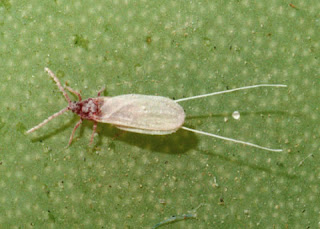A quick research will, of course, take you to wikipedia -- modern day's answer to just about anything (remember those things called encyclopedia when you were young? Totally dating myself.) There are, of course, all naturally food coloring, such as:
- Caramel coloring (E150), made from caramelized sugar, used in cola products and also in cosmetics
- Annatto (E160b), a reddish-orange dye made from the seed of the achiote.
- A green dye made from chlorella algae (chlorophyll, E140)
- Cochineal (E120), a red dye derived from the cochineal insect, Dactylopius coccus
- Betanin (E162) extracted from beets
- Turmeric (curcuminoids, E100)
- Saffron (carotenoids, E160a)
- Paprika (E160c)
- Elderberry juice
- Pandan (Pandanus amaryllifolius), a green food coloring
- Butterfly pea (Clitoria ternatea), a blue food dye
Pay particular attention to cochineal, it is derived from what, an insect?
Female cochineal
Photo credit: Webexhibits.org
Male cochineal
Photo credit: nathistoc.bio.uci.edu
© Peter J. Bryant
Yummy!


This is really infromative. It also confirms what I have been suspecting all along - food colouring is bad for you! I limit my choice of cakes, if possible, to three basic colours, vanilla, chocolate and chestnut.
ReplyDelete